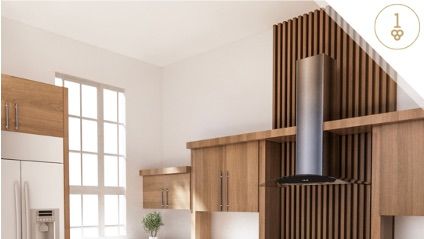5 Design Secrets for Mixing Wood Tones

The key to creating a design-inspired space lies in the art of layering. Professional designers know this well. Regardless of the material, layering textures and tones creates and intentional and inspired look. Mixing wood tones is an excellent way to design with depth and prevent the room from falling flat. Here are some designer tips to seamlessly blend wood tones throughout your home.
Select a Dominant Tone
Identifying a single dominant tone is the first step in mixing wood tones. Selecting the primary tone creates the base on which to layer different tones, textures, and colors. Depending on the space, the dominant wood tone will likely be the largest surface areas, such as the dining room floors, living room entertainment center or the kitchen cabinets.
Coordinate the Undertones
With the dominant wood tone selected, it’s time to layer in other wood tones. To ensure a cohesive look and feel, choose complementary wood with under tones in the same family as the dominant tone. For example, if your prevalent wood is warm, select accent wood with warm undertones. The same is true for cooler wood tones.
Use Repetition
To create an interesting designer look, incorporate each wood tone in at least two ways. This is the secret to making any design intentional, with any texture, color, or pattern. Varying wood tones also need to be spaced out to create balance, however. For example, if you group all the dark-toned woods together on the wall and group all the light-toned woods together on the built-ins, the room will look off-balance and the darker end will appear smaller and foreboding.
Contrast Furniture and Flooring
In a room with hardwood floors and wood furniture, selecting different color woods with the same undertones will create a visual break. Different tones will create visual interest and break up the heaviness of the wood tone layered on top of each other. An easy rule of thumb is to select three wood tones in a space: light, medium, and dark.
Accentuate with an Accent Color
To complete any room design, incorporate accent colors or patterns to act as the room’s jewelry. One or two accent colors or repetitive patterns can tie the space together and can be incorporated throughout the room in the upholstery, curtains, throw pillows, lamp shades and more. Another way to break up the monotony of an all-wood space is to incorporate furniture pieces in various textures like leather, rattan, metal, or painted wood accent pieces.
It's Not Magic
While there is no magic formula for mixing and matching wood finishes, knowing the basics can make the design process feel less complicated. Start with a dominant tone, understand and coordinate under tones, use repetition and contrast to your advantage and add accent colors and textures for visual interest.
Related Post: 4 Simple Paint Projects to Transform Your Space










